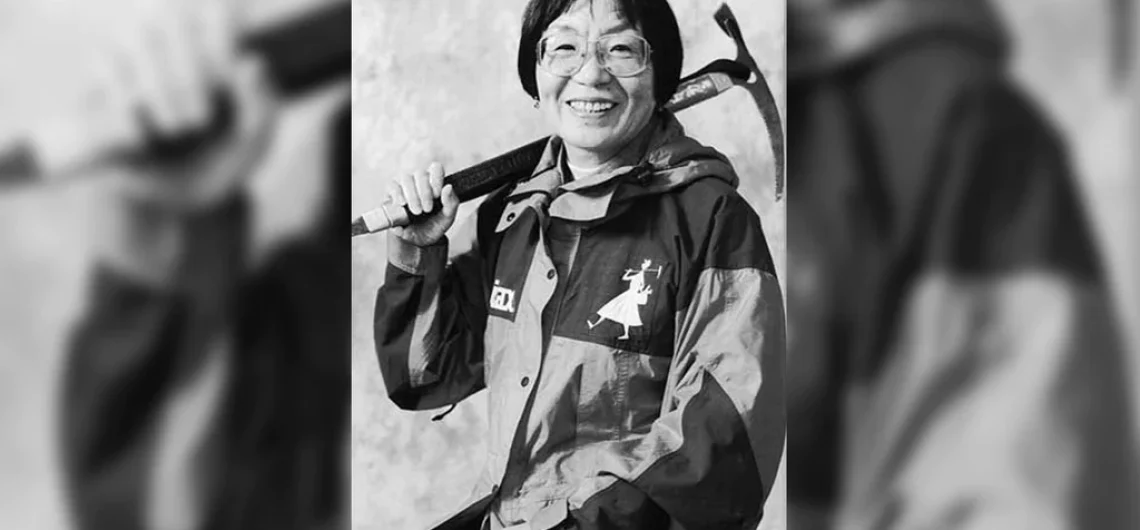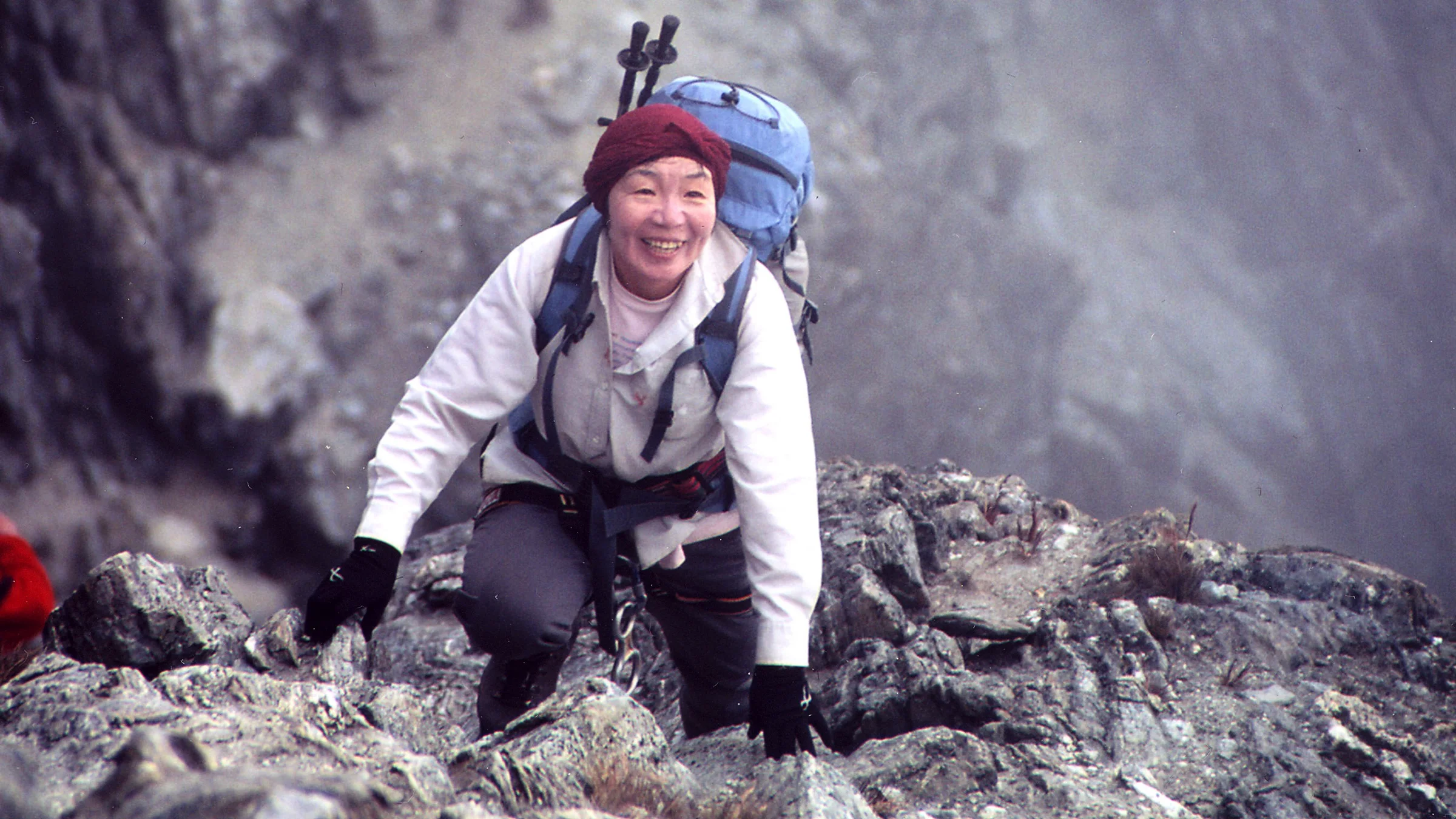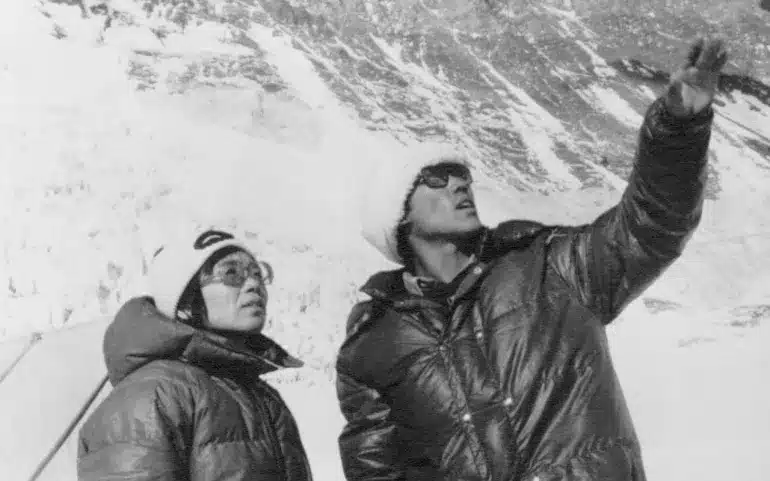Junko Tabei is a name that will forever be associated with mountaineering history. She was the first woman to successfully summit Mount Everest, and her achievements have inspired countless women around the world to pursue their dreams and push beyond their limits.
Tabei was the sixth daughter in a family of seven born in Miharu, Fukushima a popular town in Japan, due to the 2011 nuclear plant incident. Despite being viewed as a fragile, feeble youngster, she started mountain climbing at the age of 10 when she went on a class excursion to Mount Nasu. Tabei only made a few climbs throughout her time in high school, although having an urge in doing more. Her family did not have the money for such an expensive activity.
Early Life and Climbing Career
Junko Tabei was born in 1939 in Miharu, a town in the Fukushima prefecture of Japan. She first became interested in climbing as a university student, where she joined a mountaineering club. In 1969, she founded the Ladies Climbing Club, which was dedicated to encouraging women to pursue mountaineering.
Tabei participated in the mountain climbing club when she attended Showa Women’s University from 1958 to 1962 to study English literature and teaching. Tabei founded the Ladies Climbing Club: Japan (LCC) in 1969 after receiving her degree. The club, the first of its type in Japan, with the motto “Let’s go on an overseas expedition by ourselves.” Later, Tabei said that the way in which she was treated by male mountaineers at the time—some of whom refused to accompany her on climbs and others who believed she was simply interested in climbing to find a husband—led her to create the club.
She scaled peaks like Mount Fuji in Japan and the Matterhorn in the Swiss Alps at this period.
Junko’s first major climb was Mount Nasu in Japan in 1961, but she quickly set her sights on bigger challenges. In 1975, she became the first woman to successfully summit Pakistan’s 26,660-foot Mount Gasherbrum II.
She was able to secure last-minute funding from Nippon Television and the Yomiuri Shimbun newspaper, but all of the group members were still had to pay a sum that was nearly equivalent to the average wage in Japan. They would make waterproof bags and overgloves out of discarded car seats in order to save money. Furthermore, they constructed their own sleeping blankets using goose feathers they bought in China. Unused jam packets were collected by students at school for their instructors.
The group underwent extensive preparation before departing for Kathmandu early in 1975 to start the adventure. To climb the summit, they followed the same path that Tenzing Norgay and Sir Edmund Hillary had used in 1953.
The team was camped at 6,300 meters in early May when an avalanche struck. The snow had buried the ladies and their guides. Tabei was unconscious for around six minutes before her sherpa guide helped her. Tabei and her sherpa guide, Ang Tsering, conquered Everest as the first woman on May 16, 1975, twelve days after the disaster.
Tabei got several congratulations for her accomplishments, including letters from the King of Nepal and the Japanese government, a television miniseries about the trip, and a promotional tour in Japan. Tabei, however, was uneasy with this degree of admiration and fame.
 Why did Junko Tabei climb Everest?
Why did Junko Tabei climb Everest?
Having climbed over 70 mountains in different countries of the world, Junko Tabei felt like it was time to conquer the highest mountain in the world, Mount Everest. it was a matter of personal accomplishment which is why she did it by herself without any corporate sponsorship whatsoever.
When did Junko Tabel become the first woman to summit Everest?
May 16, 1975, was a historical time for Junko Tabei as she successfully made it to the top of Everest with the help of her sherpa guide, Ang Tsering. Her remarkable achievement was celebrated with a parade in her honour in Kathmandu, earning her great acclaim. This was barely 12 days after the avalanche that had struck their expedition team. It is mind-boggling that if they couldn’t have survived the avalanche, history would have been rewritten and Junko Tabei wouldn’t be the first woman to climb Everest to the summit.
The Historic 1975 Everest Expedition
In 1975, Junko Tabei joined an international team of climbers for an expedition to Mount Everest. On May 16, 1975, Junko and her team reached Mount Everest’s summit, making her the first woman in history to do so.
However, Junko’s historic achievement was not without its challenges. The team faced harsh weather conditions and a lack of oxygen, and at one point Junko was buried under an avalanche for six minutes. Despite these obstacles, she persevered and reached the summit.
The Japanese Women’s Everest Expedition (JWEE), led by Eiko Hisano, was a group that would make an attempt to climb Mount Everest, and it was part of Tabei’s LCC. There were 15 people in JWEE, and most of them were employed women. Among them were instructors, a computer programmer, and a youth counsellor. Tabei was one of two moms among them. LCC decided to climb Mount Everest after Tabei and Hiroko Hirakawa successfully ascended Annapurna III on May 19, 1970.
While Tabei assisted in securing funding for the expedition, she regularly heard that the women “should be raising children instead.”
Life After Everest
Junko Tabei’s achievement on Mount Everest made her a national hero in Japan, and she continued to inspire women around the world with her mountaineering accomplishments. She went on to climb the highest peaks on all seven continents, completing the Seven Summits in 1992.
In addition to her mountaineering career, Junko was also a committed environmentalist and worked to promote sustainable tourism in the mountains.
Tabei succeeded in climbing Mount Vinson, the highest mountain in Antarctica, during the 1990–1991 season. She reached the summit of Puncak Jaya on June 28, 1992, making history as the first female to climb all seven peaks.
Tabei also focused on environmental issues; in 2000, she finished her doctorate studies at Kyushu University with an emphasis on the environmental harm mountaineering groups were doing to Mount Everest. Tabei also served as the director of the Himalayan Adventure Trust of Japan, an organization dedicated to protecting mountain ecosystems on a worldwide scale. Building an incinerator to burn the trash left behind by climbers was one of the trust’s tasks. She also led and took part in “clean-up” climbs in the Himalayas and Japan.
Death, Legacy and Inspiration
Tabei was diagnosed with stomach cancer in the year 2012, however, she continued to participate in many of her mountaineering activities. In July of 2016, despite the progression of her illness, she led a youth expedition up Mount Fuji. Unfortunately, she passed away in a hospital located in Kawagoe on the 20th of October, 2016. Prior to her passing, an asteroid was named after her by an astronomer, known as asteroid 6897 Tabei. On the 22nd of September, 2019, Google paid tribute to Tabei on what would have been her 80th birthday by creating a Doodle in her honor. The write-up that accompanied the Doodle featured her motivational slogan, “Do not give up. Keep on your quest.” Additionally, on the 19th of November, 2019, a mountain range on Pluto was named Tabei Montes in recognition of her significant mountaineering achievements. It is worth noting that the theme for naming mountains on Pluto is “Historic pioneers who crossed new horizons in the exploration of the Earth, sea and sky.” Her legacy continues to inspire people around the world. Her dedication to mountaineering and her groundbreaking achievements have paved the way for women in the sport, and her determination and resilience continue to be a source of inspiration to this day.
Junko Tabei and her sherpa guide, Ang Tsering become the first women to summit Mount Everest!
It shouldn’t go unnoticed that when Tabei climbed Everest to smash this record, she chose a woman sherpa by her side. Her name is Ang Tsering and together with Juno, they became the first women to reach the summit of Mount Everest. Junko Tabei’s historic achievement on Mount Everest serves as a reminder that anything is possible with hard work, determination, and a refusal to give up. Her legacy continues to inspire people around the world, and her impact on mountaineering history will never be forgotten.
Personal Life
Masanobu Tabei, a climber she met while climbing in Japan in 1965, was Tabei’s husband. Noriko, a girl, and Shinya, a son, were the couple’s kids.
Despite receiving a cancer diagnosis in 2012, Tabei continued to participate in a lot of climbing activities. On October 20, 2016, she passed away at a Kawagoe hospital.
If you want to learn more about mountaineering and other outdoor adventures, be sure to check out our website for more information.
- How Stella Point was named after Estella Latham, the first woman to reach this point
- Tamae Watanabe, the Oldest Woman to Climb Mount Everest
- Lhakpa Sherpa, was the first Nepali woman to successfully climb and survive Everest.
- WANDA RUTKIEWICZ; First woman to summit K2 and first European woman to climb Everest ; The first Polish citizen to climb Mount Everest and K2
- About Hannelore Schmatz, the First German and First Woman to Die on Mount Everest
- Marty Hoey Might Have Been First American Woman to Climb Everest. Then She Fell to Her Death
- How Gertrude Emily Benham’s climb has been overlooked in the history books as the first woman to climb Kilimanjaro
- The first woman to climb Mount Kilimanjaro; Sheila McDonald from London
- First Quadriplegic Woman to Climb Mount Kilimanjaro
![]()


 Why did Junko Tabei climb Everest?
Why did Junko Tabei climb Everest?